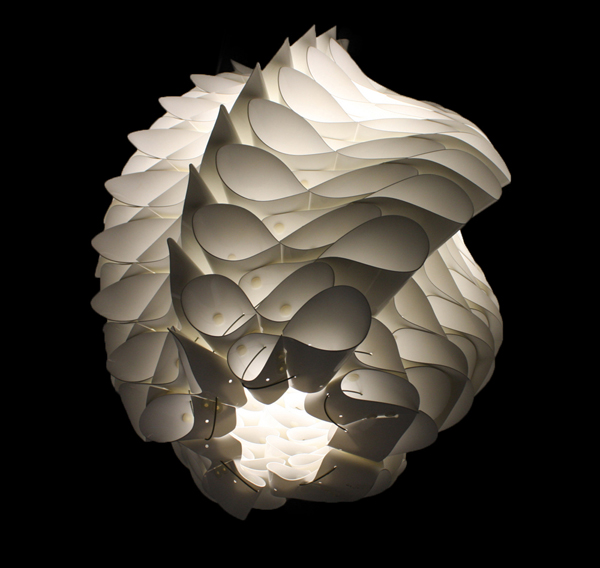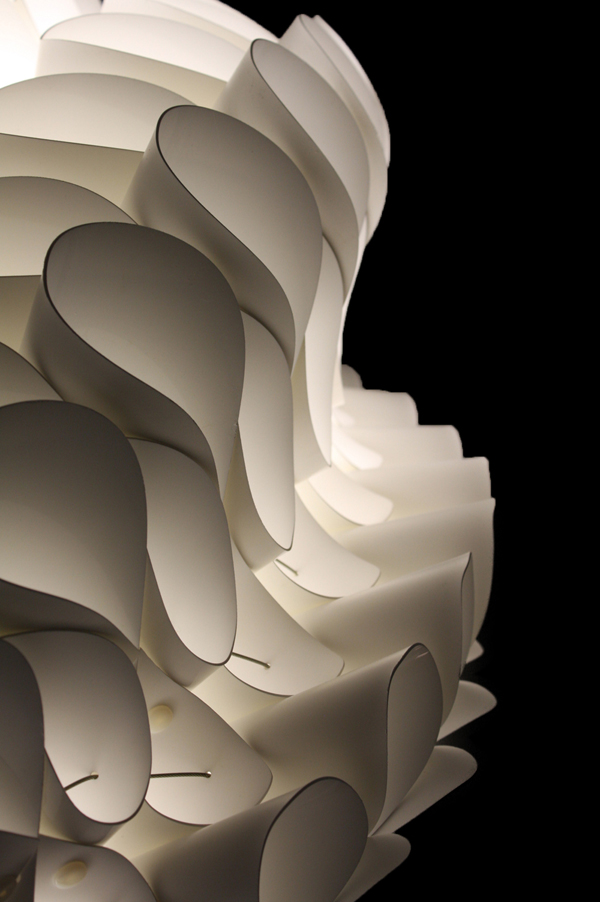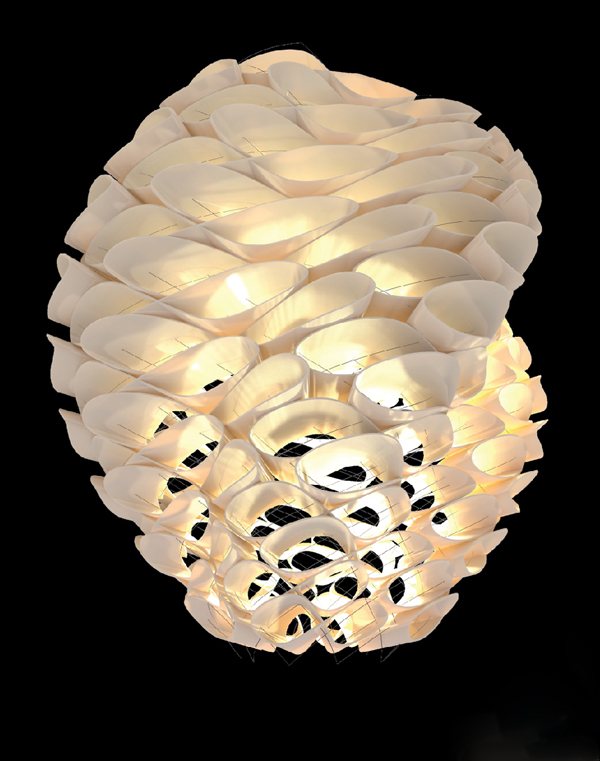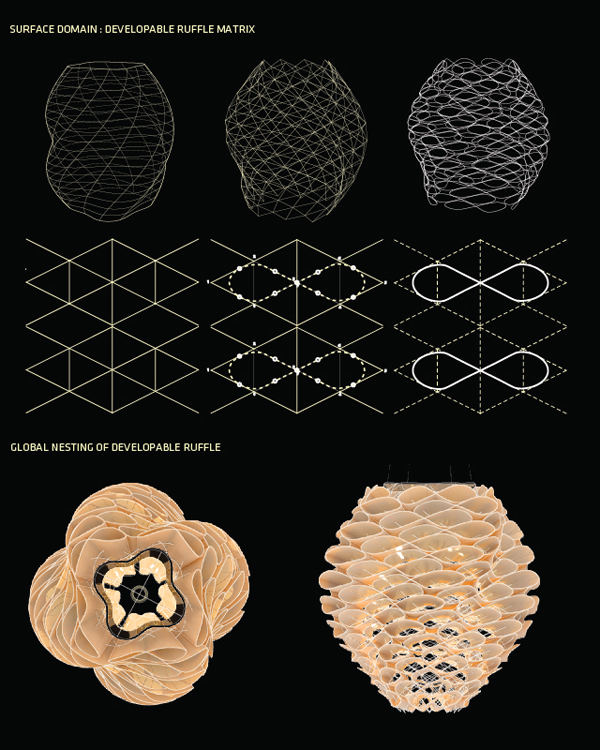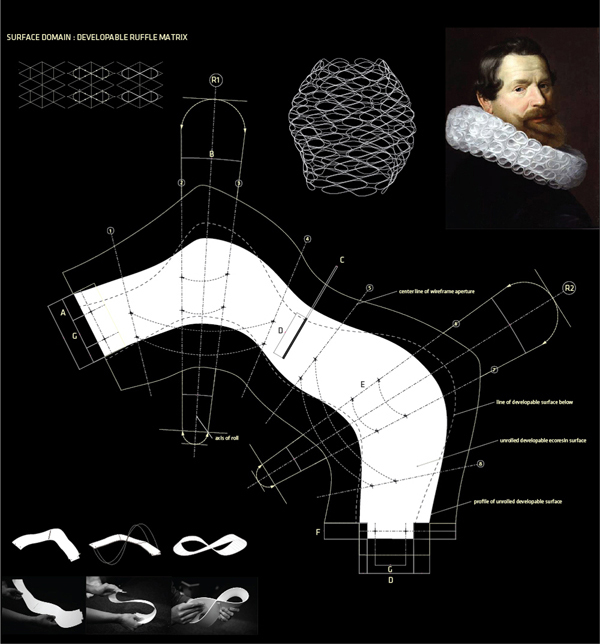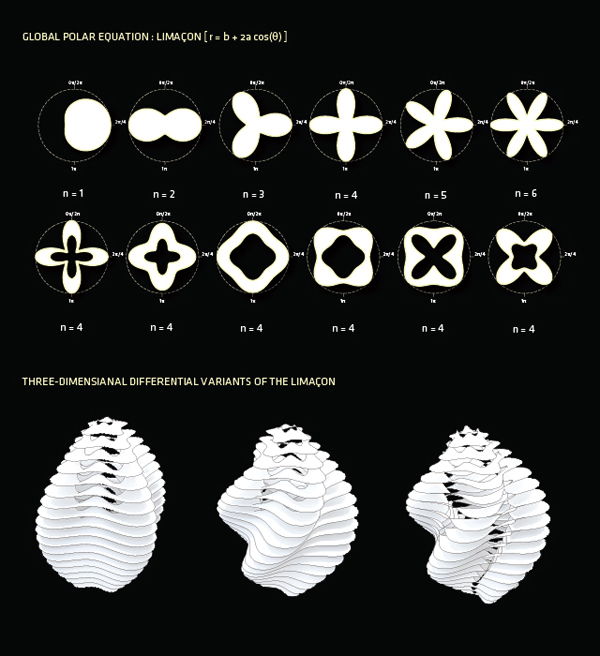The award winning lighting design is based on the effects of the Dutch ruff, a decorative linen collar considered fashionable in the 1600’s. The collars required several yards worth of linen, and had to be starched and ironed into pleats, or even supported on wires, in order to achieve their voluminous appearance. Inspired by the way Flemish baroque painter Cornelis de Vos illuminated these items, Andrew Saunders created the similarly shaped Luminescent Limacon. The design integrates historical referencing to the contemporary fabrication techniques, transforming the traditional piece of garment into a vehicle for manipulating light.
This occurs at two levels, both as an ephemeral reflective source and as a figural volume with a material presence. This dense accumulation of light is achieved through a combination of the chiaroscuro painting technique, which uses dramatic contrast of light to build volume, and by trapping light through a process of periodic folding that creates a deep translucent ruffle. The geometry of the structure is determined through use of the polar equation-based Limacon curve. Rolling of the curve at different speeds generates self-similar profiles. Two levels of geometry appear simultaneously: the primary one is combined vertically, while the secondary, following similar geometric progression, creates folds that are nested diagonally and can be interconnected when they meet flush. For fabrication and assembly, these surfaces are embedded with a number of parameters including placement of apertures for connection points, material thickness, tabbing and indexing. Each individual unrolled developable surface contains a unique and specific location and assembly instruction.

